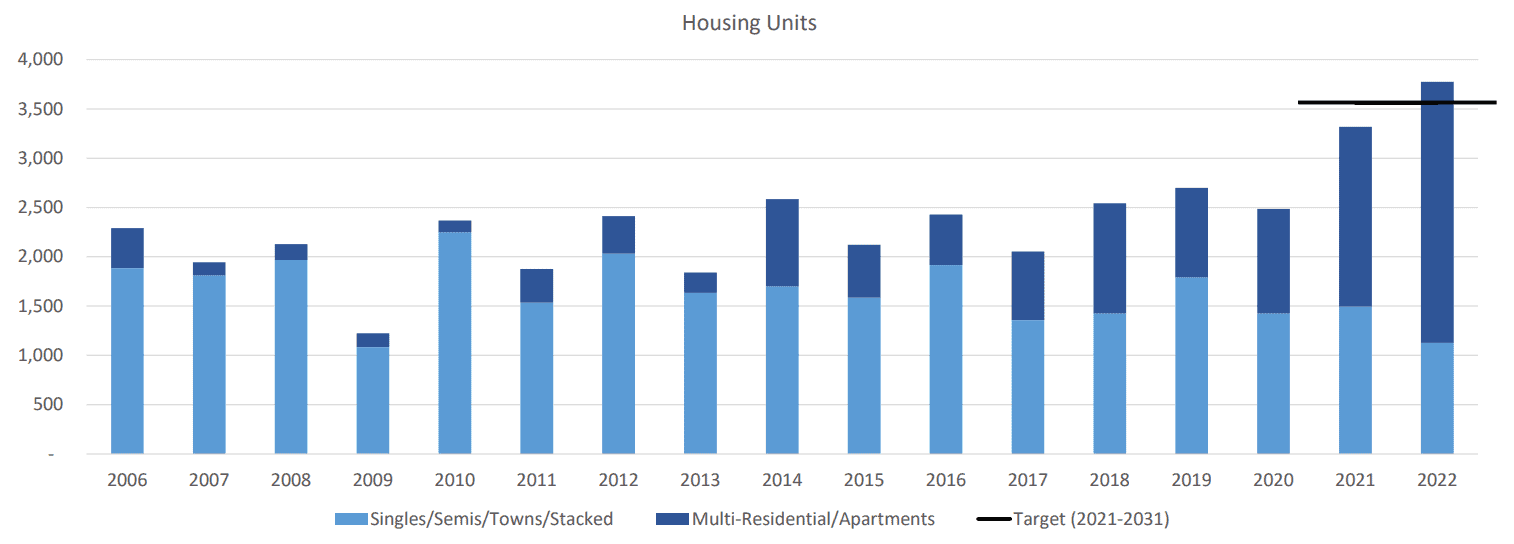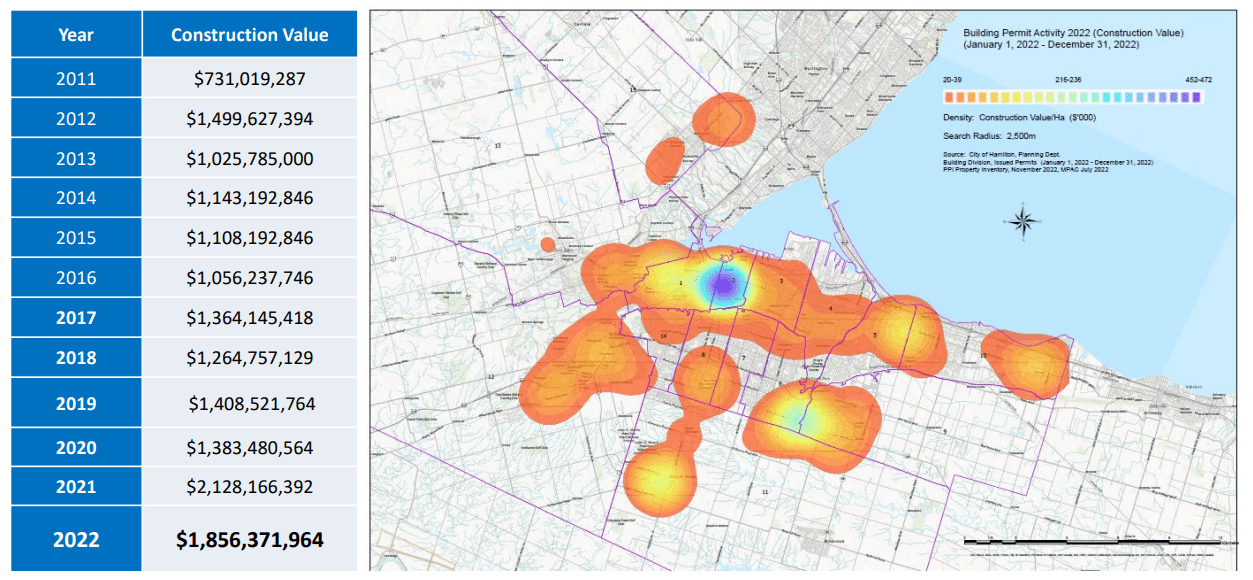More homes being built in Hamilton than ever. Are we ready for the population boom?
https://www.insauga.com/more-homes-b...k0d9M5ZsOXw2uY
If you’ve lived in Hamilton long enough, you’ve probably become numb to ‘ambitious city’ conjecture. “Hamilton is really growing,” said every single person over the last few decades.
But what does that mean? Growing, as in people? Housing? Business? Entertainment?
Short answer: Yes.
Growth had been moving at a modest pace for decades, but momentum has increased considerably over a brief period. In fact, on the heels of what was a record year for development in Hamilton in 2021 came the next domino — a historic 2022 for new housing.
“Many people want to move to Hamilton, and it’s not just one or two areas. We’re seeing growth in Waterdown, Stoney Creek… it’s happening all around the city,” says Jason Thorne, General Manager of Hamilton’s Planning and Economic Development Department.
Permits were given for about 3,750 new homes last year, easily exceeding the city’s target and eclipsing the previous record set in 2021 by almost 1,000.

The numbers are staggering on the surface, but the biggest eye-opener comes into focus as we peel back the layers and look at the types of homes being built.
In the early-to-mid 2010s, the homes being built in Hamilton were mostly for single-family use. Apartments and condominiums made up just 10 per cent of the new builds.
In 2021, for the first time in Hamilton’s 177-year history, more than 50 per cent of the city’s permits were awarded to apartment and condo developers. In 2022, those projects made up nearly 75 per cent.
Hi, Density
Hamilton is growing, and it’s growing up — like, 20 storeys up.
“The shift is toward higher density, for sure,” added Thorne.
He says the city had averaged around 150 new purpose-built rental units per year. In 2022, that number sky-rocketed to approximately 1,100 — plus another 200 or so in the secondary rental market, where homes will be purchased and rented out to tenants.
Any conversation involving housing development is understandably met with skepticism regarding affordability.
In 2012, the average home in Hamilton sold for just over $200,000. In 2022, it was over $950,000. The pandemic and ensuing work-from-home office culture spurred many living in Greater Toronto to sell their multi-million dollar homes and “downsize” with a move to Hamilton. It drove prices up, not just because people with the means were objectively overpaying for their homes, but also because there weren’t many homes to choose from. For added context, homes being sold spent an average of just ten days on the market in 2022.
High demand and low supply are a recipe for a housing crisis. So increasing the supply in this context is rarely a bad thing.
No finer place for sure
The city’s downtown core, no longer just a series of one-way roads to get you through Hamilton and into the GTA remains a hotbed for high-density development, meaning the city’s long-running vision for a downtown that residents want to live, work, and play in is moving further into focus.
The area is also increasingly less car-dependent, leaving more space for people, thanks to rising vehicle ownership costs and the availability of car and bike shares and more efficient public transit. Hamilton light rail transit (LRT) project is also nearly shovel-ready and is expected to transform the entire system for the better.
Thorne says, with more people living in Hamilton’s urban centres, the city’s investments should reflect that.
“The shift toward higher density homes highlights the importance of transit investment,” he says. “We know those individuals are more likely to use transit, but they’re also looking for parks and public spaces.”

Speaking of investments, while still speculative, it is possible to see what the future holds for a city based on how much money is being spent on long-term projects.
In 2021, the City of Hamilton signed a 49-year agreement with the Hamilton Urban Precinct Entertainment Group to operate and maintain FirstOntario Centre, FirstOntario Concert Hall, and Hamilton Convention Centre.
The group will spend a minimum of $50 million to renovate FirstOntario Centre, which includes a new exterior facade and video board, “comprehensive transformation of the lower bowl,” expanded concourse level, and a new flexible curtaining system for the upper bowl balcony.
The renovation also proposes to allow year-round access to street-level activations on York Blvd., which the group says will include a sports lounge, e-gaming zone, and other food and beverage offerings in collaboration with local hospitality partners.
There are also plans for over $12.5 million in capital upgrades, expansion and aesthetic enhancements to the existing Hamilton Convention Centre and Concert Hall, and a one-time $2 million contribution to the Art Gallery of Hamilton.
The Hamilton Urban Precinct Entertainment Group’s plan also includes over $500 million in additional mixed-use development, including 5 per cent affordable housing in one of the residential developments.
Billions upon billions upon billions of dollars are being wagered on Hamilton’s steady growth by seasoned investors who take far fewer risks than one might expect. And we haven’t even mentioned the waterfront renaissance taking place on the shores.
The Greater Hamilton population has already exceeded projections by reaching 781,000 in 2022. In ten years, the population is expected to reach 864,000, and all indicators point to a growth-minded Hamilton being well-prepared to accommodate the boom.



